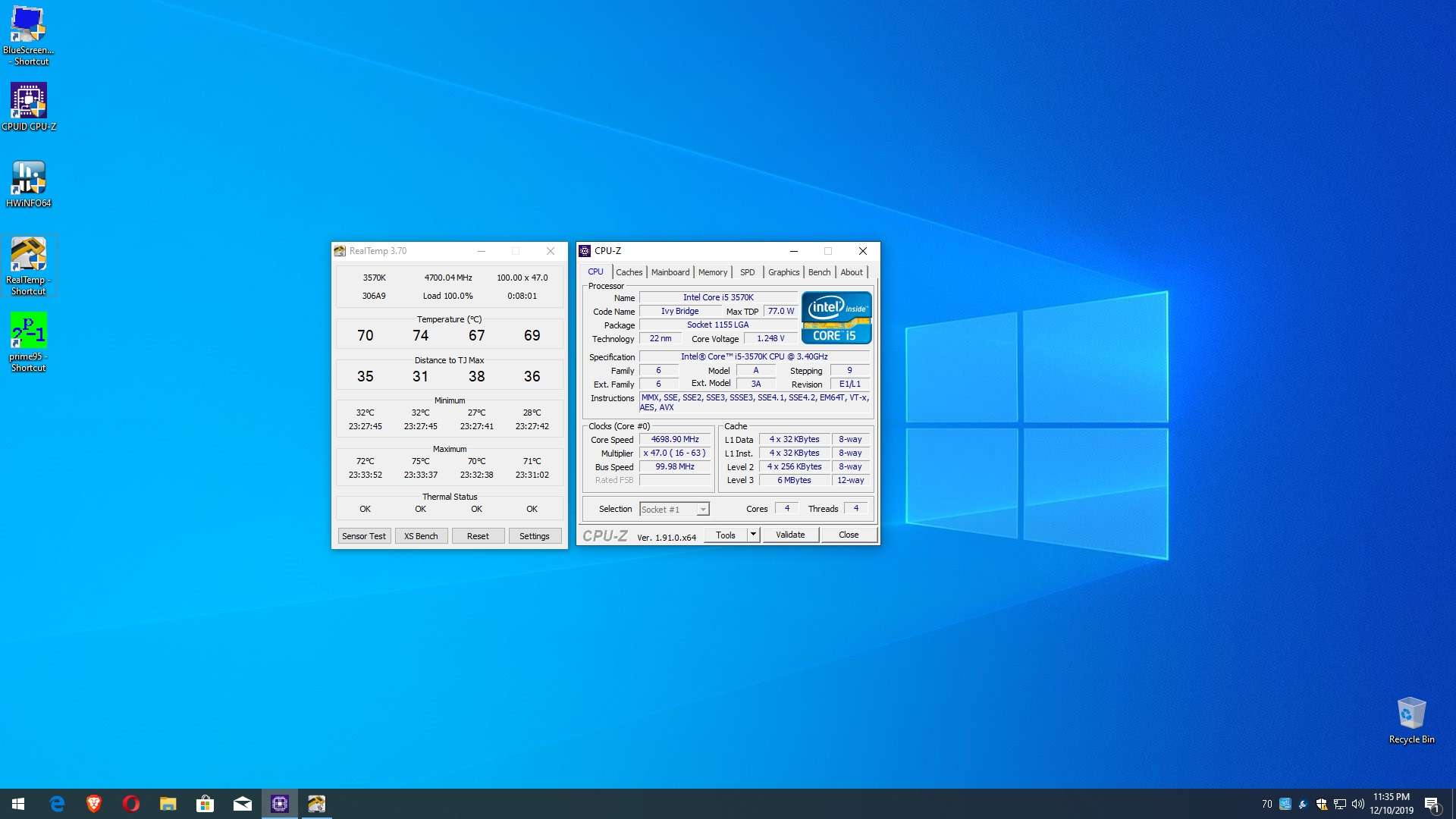Wetles89,
No two processors are identical; each is unique in voltage tolerance, thermal behavior and overclocking potential, which is often referred to as the "silicon lottery".
• Overclocking is always limited by two factors; voltage and temperature.
Here's the nominal operating range for Core temperature:
Core temperatures above 85°C are not recommended.
Core temperatures below 80°C are ideal.
Core temperatures increase and decrease with Ambient temperature.
As Core speed (MHz) is increased, Core voltage (Vcore) automatically increases to maintain stability. However, it is
not recommended to overclock using “Auto” settings, as it will apply significantly more Core voltage than necessary to maintain stability, which needlessly increases Power and heat. It is therefore
highly recommended to use only "manual" Vcore settings in BIOS. Since overclocked processors with higher Vcore can run more than 50% above rated TDP,
high TDP air or liquid cooling is crucial.
Each Microarchitecture has a “Maximum Recommended Vcore”. For example, it’s important to point out that 22 nanometer 3rd and 4th Generation processors will
not tolerate the higher Core voltages of other Microarchitectures.
Here's the maximum recommended Core voltage per Microarchitecture from 14 to 65 nanometers since 2006:
We know that over time, excessive voltage and heat damages electronics, so when using manual Vcore settings in BIOS, excessive Core voltage and Core temperature can result in accelerated "
Electromigration". Processors have multiple layers of hundreds of millions of microscopic
nanometer scale components. Electromigration causes circuit pathways and transistor junctions to undergo premature erosion and performance
degradation.
Although your initial overclock may be stable, degradation doesn't appear until later, when increasingly frequent blue-screen crashes indicate a progressive loss of stability. The more excessive the levels of voltage and heat and the longer they're sustained determines how long until transistor degradation destabilizes your overclock. Decreasing overclock and Vcore may temporarily restore stability and slow the rate of degradation.
Extreme overvolting can cause degradation in minutes, but a sensible overclock remains stable for years.
Each Microarchitecture has a "Degradation Curve". As a rule, CPU's are more susceptible to electromigration and degradation with each Die-shrink. However, the exception to the rule is Intel's 14 nanometer Microarchitecture, where advances in FinFET transistor technology have improved voltage tolerance.
Here's how the Degradation Curve on 22 nanometer 3rd and 4th Generation differs from 14 nanometer 5th through 9th Generation:
Degradation Curves are relative to the term “
Vt (Voltage threshold) Shift” which is expressed in millivolts (mv). Users can not monitor Vt Shift. With respect to overclocking, Vt Shift basically represents the potential for
permanent loss of normal transistor performance. Excessively high Core voltage drives excessively high Power consumption resulting in higher Core temperatures during heavy workloads, all of which contribute to gradual Vt Shift over time. Core voltages that impose high Vt Shift values are
not recommended.
When tweaking your processor near its highest overclock, keep in mind that for an increase of 100 MHz, a corresponding increase in Core voltage of about 50 millivolts (0.050) is needed to maintain stability. If 70 millivolts (0.070) or more is needed for the next stable 100 MHz increase, it means your processor is overclocked beyond its capability.
With high-end cooling you might reach the Vcore limit before
85°C. With low-end cooling you’ll reach
85°C before the Vcore limit. Regardless, whichever limit you reach first is where you should stop. Thermal testing is explained in Sections 10 through 12.
Remember to keep overclocking in perspective. For example, the difference between 4.5 GHz and 4.6 Ghz is less than 2.3%, which has no noticeable impact on overall system performance. It simply isn’t worth pushing your processor beyond recommended Core voltage and Core temperature limits just to squeeze out another 100 MHz.
CPU Overclocking Guide and Tutorial for Beginners - https://forums.tomshardware.com/faq/cpu-overclocking-guide-and-tutorial-for-beginners.3347428/
Intel Temperature Guide -
https://forums.tomshardware.com/threads/intel-temperature-guide.1488337/
CT 






